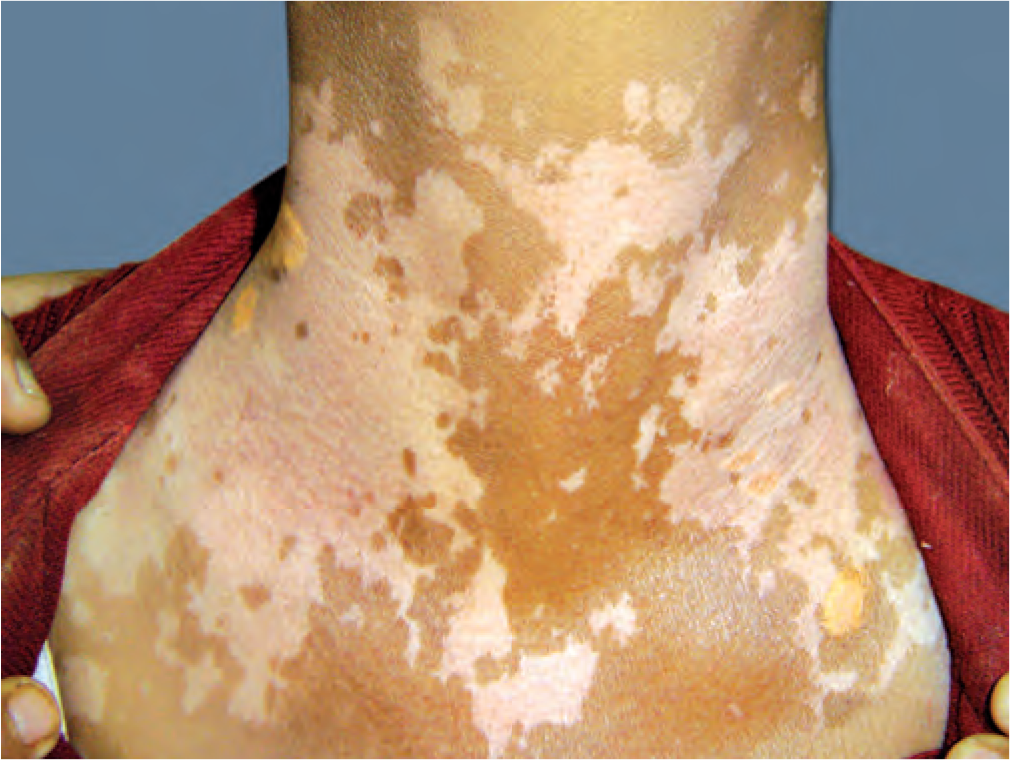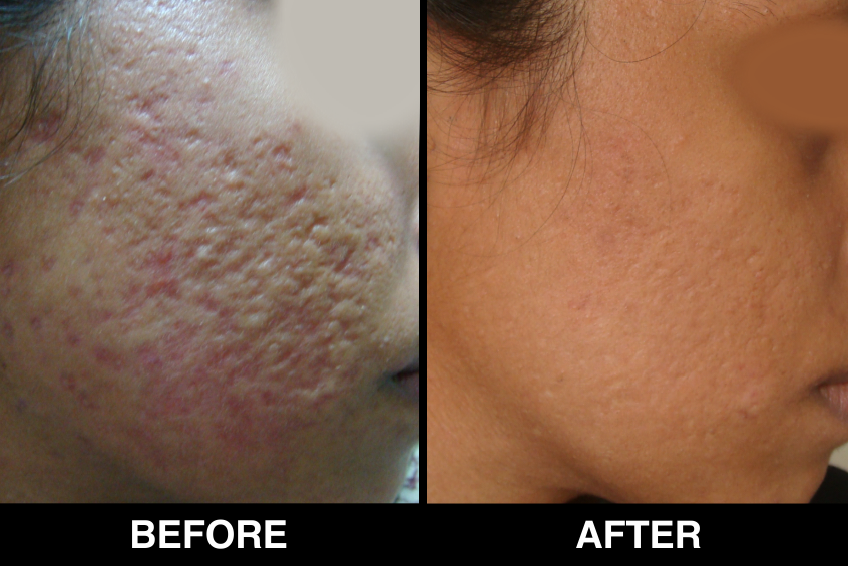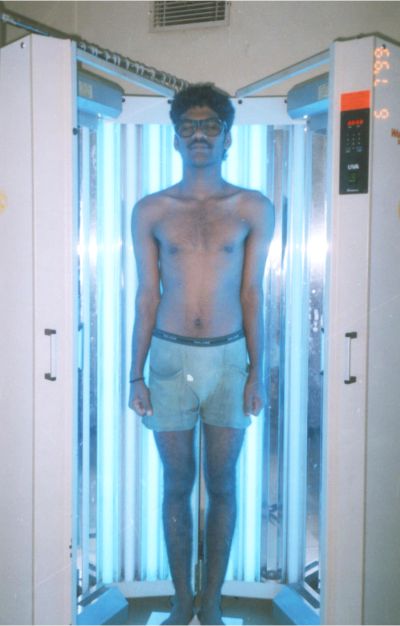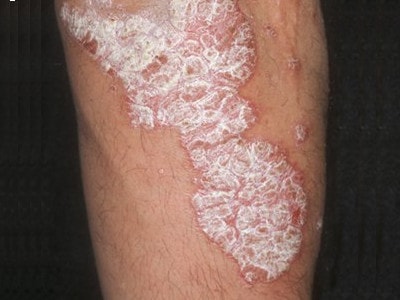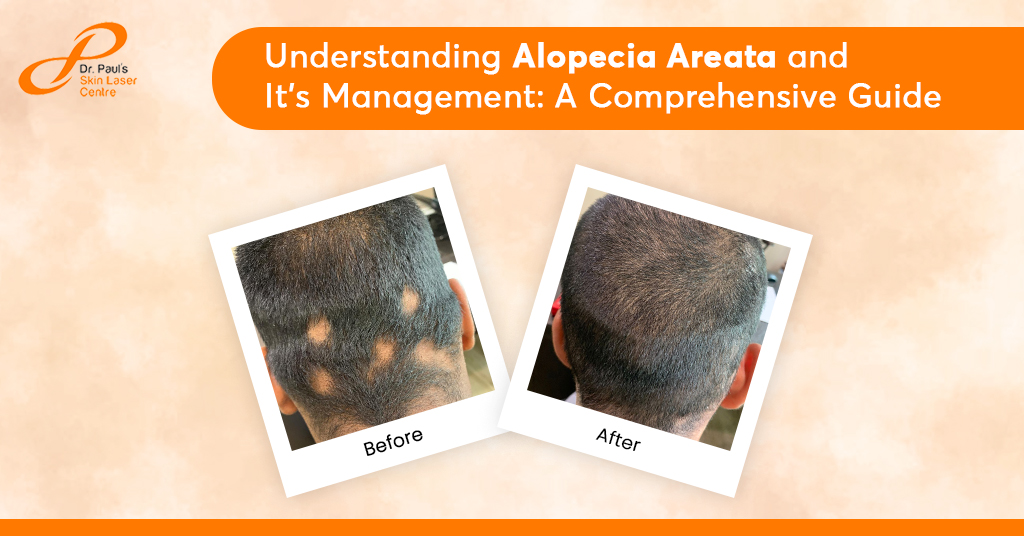Hair loss can be a stressful experience and If you’re dealing with sudden, patchy baldness, you might have Alopecia Areata.
This autoimmune disorder attacks your hair follicles, leading to smooth, round patches of hairloss. While there’s no cure, but multiple treatment options are available for its management.
What is Alopecia Areata?
Alopecia Areata disrupts the normal growth cycle of hair. Our hair follicles constantly produce new hair, but in Alopecia Areata, the immune system mistakenly targets these follicles, stopping hair growth. This results in the characteristic smooth, coin-sized bald patches.
Anyone can develop Alopecia Areata, but it often strikes in childhood or young adulthood. It’s not contagious and doesn’t favor any specific gender or race.
There are different types of Alopecia Areata:
- Alopecia Areata: This is the most common form, causing one or more bald patches.
- Alopecia Totalis: This leads to complete hair loss on the scalp.
- Alopecia Universalis: This is the rarest form, causing total body hair loss.
What Causes Alopecia Areata?
The exact cause of Alopecia Areata is unknown, but it’s believed to be an autoimmune issue. Normally, the immune system protects the body from infection.
In Alopecia Areata, however, it mistakenly attacks healthy hair follicles. Genetics may also play a role, as the condition can sometimes run in families.
Symptoms of Alopecia Areata
The main symptom of Alopecia Areata is sudden hair loss in smooth, round patches, usually on the scalp. The patches can grow larger or even merge.
Hair loss can also occur on the eyebrows, beard, or anywhere on the body where hair grows.
In some cases, hair loss can happen very quickly, even overnight. Some people experience nail changes, like pitting or dents in the fingernails.
Living with Alopecia Areata
Alopecia Areata can be emotionally challenging. Hair loss can affect self-esteem and confidence. However, it’s important to remember that you’re not alone. Many people live with Alopecia Areata and lead fulfilling lives.
Management for Alopecia Areata
There is no cure for Alopecia Areata, but there are several things that can help you manage the condition and potentially promote hair regrowth. The best approach for you will depend on the severity of your condition and your individual preferences. Here are some common approaches:
- Dermatologist Consultation: A dermatologist, a doctor specializing in skin conditions, can diagnose your Alopecia Areata and recommend the most suitable management plan.
- Medications: Several medications can help stimulate hair growth or suppress the immune system’s attack on hair follicles. These include corticosteroids, minoxidil, and immunosuppressants. It’s crucial to discuss the potential benefits and side effects of each medication with your doctor.
- Phototherapy: This treatment uses ultraviolet light to stimulate hair growth. It can be an effective option for some people with Alopecia Areata.
- Stress Management: Stress can worsen Alopecia Areata symptoms. Techniques like yoga, meditation, or deep breathing can help manage stress and potentially improve hair growth.
- Healthy Lifestyle: Eating a balanced diet rich in essential nutrients and getting enough sleep can contribute to overall scalp health and potentially benefit hair growth.
- Hair Loss Concealments: While not a treatment, hair loss concealments like wigs, scarves, or hair toppers can offer a confidence boost while you undergo treatment.
- Support Groups: Connecting with others who understand Alopecia Areata can provide emotional support, valuable advice, and a sense of community.
Treatment Options for Alopecia Areata
There are several treatment options which can help promote hair regrowth.
The best treatment option for you will depend on the severity of your condition and your individual preferences. Here are some common approaches:
- Corticosteroid injections: These injections can help suppress the immune system and stimulate hair growth.
- Topical Medication: These are available over-the-counter and can help some people regrow hair. Various options include topical corticosteroids, Immunotherapy, Minoxidil, etc.
- Immuno modulators: There are multiple medications in this group, which can be helpful for severe cases.
- Phototherapy: This treatment uses ultraviolet light to stimulate hair growth.
Finding the Right Treatment
If you’re experiencing hair loss and suspect Alopecia Areata, it’s important to see a dermatologist specializing in skin conditions. They can diagnose your condition and recommend the best treatment options for you.
Be sure to discuss all your concerns with your doctor, including your desired outcome and any potential side effects of treatment.
Alopecia Areata can be a challenging condition, but there is hope. With various treatment options available, many people with Alopecia Areata experience successful hair regrowth and regain their confidence.
Book An Appointment








